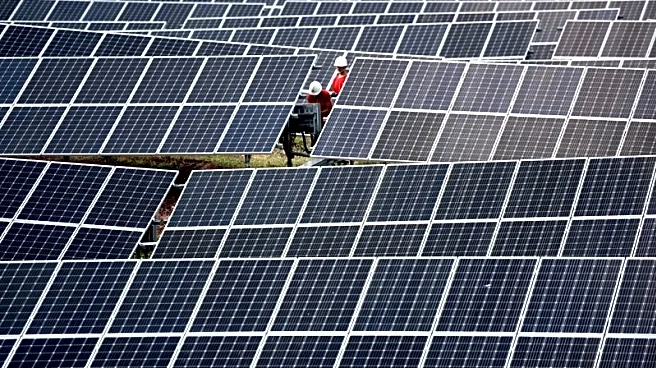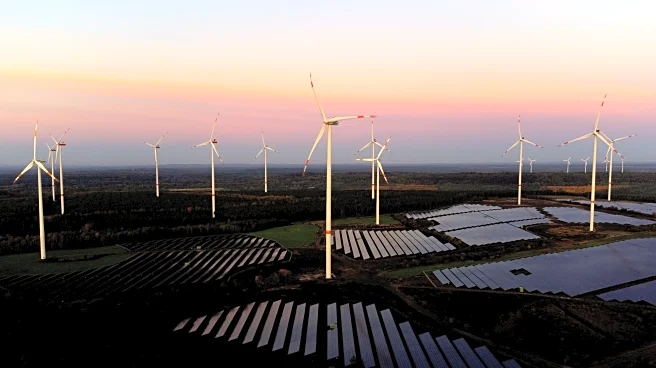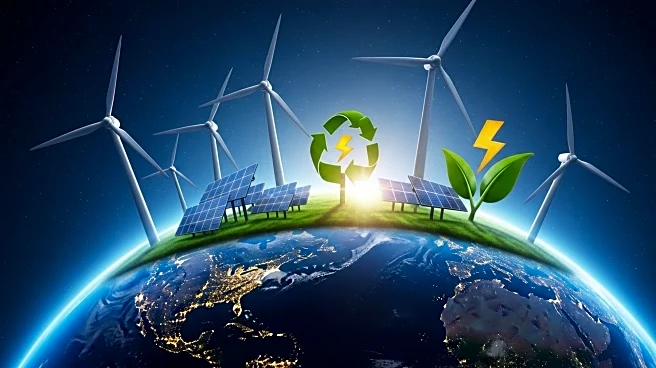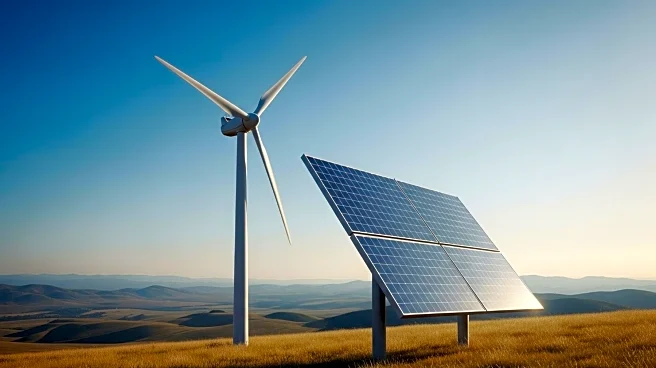What's Happening?
In the first half of 2025, renewable energy sources, including solar and wind power, have overtaken coal as the world's leading source of electricity, marking a historic shift. This development is highlighted by a report from the global energy think tank Ember, which notes that the growth in solar and wind energy was sufficient to meet the entire increase in global electricity demand, even contributing to a slight decline in coal and gas usage. However, the report also points out a mixed global picture, with developing countries like China leading the charge in clean energy growth, while developed nations such as the United States and the European Union have seen increased reliance on fossil fuels. The International Energy Agency (IEA) has adjusted its forecast for renewable energy growth in the U.S., halving its previous estimate due to the policies of President Trump's administration.
Why It's Important?
This shift in energy sources is significant as it represents a crucial turning point in the global energy landscape, with potential implications for climate change mitigation efforts. The transition to renewable energy is expected to reduce reliance on fossil fuels, which are major contributors to global warming. However, the slower growth of renewables in the U.S. could impact its ability to meet international climate commitments and maintain competitiveness in the global clean energy market. The divergence in energy policies between the U.S. and countries like China, which is rapidly expanding its clean energy capacity, underscores the geopolitical and economic stakes involved in the global energy transition.
What's Next?
The U.S. may face increased pressure to accelerate its renewable energy adoption to align with global trends and reduce its carbon footprint. Policymakers and industry leaders might need to reassess strategies to boost clean energy investments and infrastructure. Additionally, the ongoing expansion of China's clean tech exports could influence global market dynamics, potentially prompting the U.S. to enhance its focus on renewable energy technologies to remain competitive.
Beyond the Headlines
The rapid growth of solar energy, particularly in lower-income countries, highlights the potential for renewable energy to drive economic development and energy independence. However, this growth also presents challenges, such as the need for sustainable water management in regions heavily reliant on solar-powered water pumps. The varying costs and technological advancements between solar and wind energy further illustrate the complexities of transitioning to a clean energy future.












